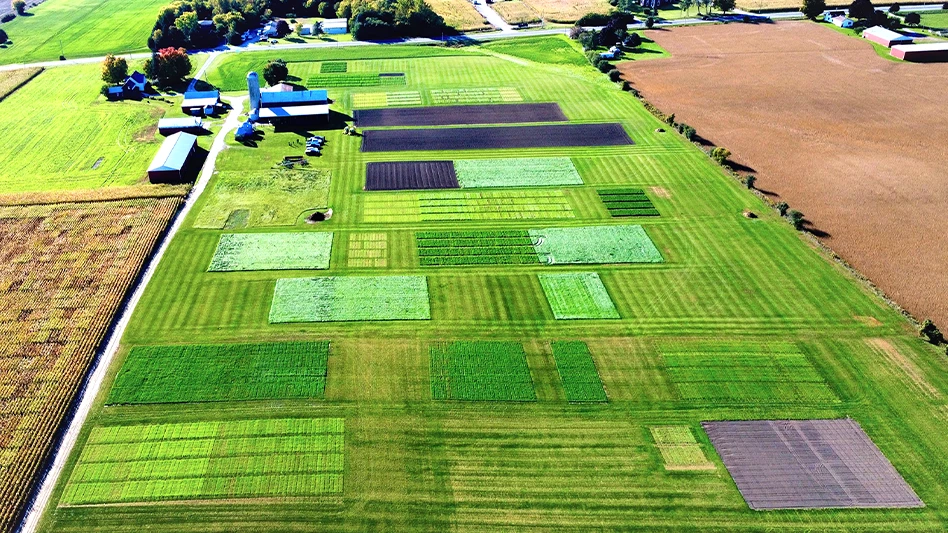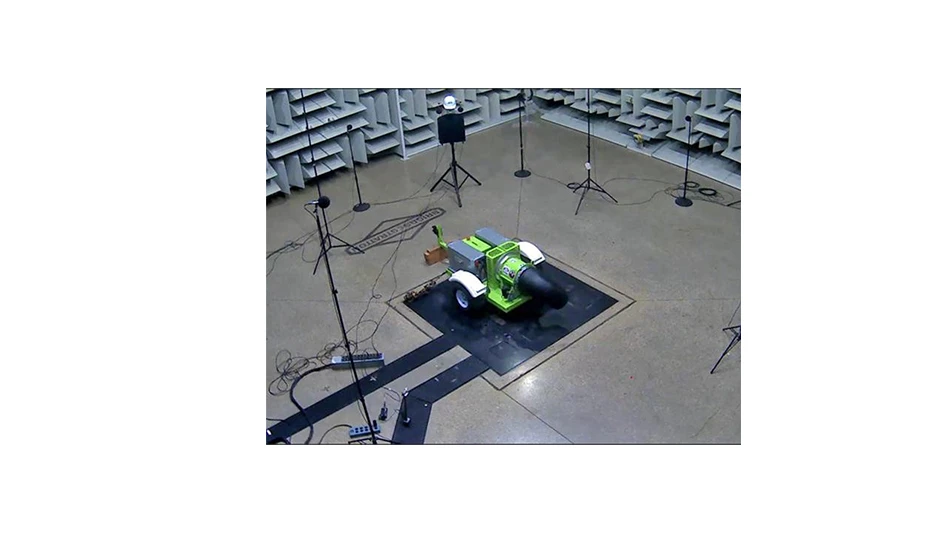
 Maintaining a healthy golf course is expensive enough. When a pesky disease such as dollar spot rears its ugly head, superintendents need to know there’s a solution in the tank that will take care of the problem and provide lasting coverage. Many have turned to Valent’s Tourney.
Maintaining a healthy golf course is expensive enough. When a pesky disease such as dollar spot rears its ugly head, superintendents need to know there’s a solution in the tank that will take care of the problem and provide lasting coverage. Many have turned to Valent’s Tourney.
Proven to deliver exceptional turf quality at low-use rates, Tourney also effectively controls additional diseases such as brown patch, snow mold and gray leaf spot, among others.
Dollar spot - most common during shoulder seasons with humid weather, warm days and cool nights - is recognizable by its dead, bleached-white or sand-colored spots on putting greens, about the size of a silver dollar. Spots can be larger on the taller grasses of fairways and tees. While aeration, proper watering and fertilization will reduce dollar spot problems, a chemical solution is often needed.
Boone Golf Club
Tim Bryant, superintendent at Boone (North Carolina) Golf Club since 2003, has been witnessing the increasing trend of dollar spot over the last several years.
“Being a public course with limited resources, our thresholds for the disease are higher,” Bryant said. “As with many golf course superintendents, I’m finding it more difficult to control dollar spot. It is no longer an 'also-ran' disease.
“Over the past three or four years, treatment windows have decreased while high-end rates are being used,” he added. “Recovery time from the disease has also been greater. In some cases the application stops the disease, but it’s almost as if the pathogen simply sits there waiting on conditions that favor its return.”
According to Bryant, dollar spot became most difficult to control in 2009 when conditions ranged from wet and humid to hot and dry. His team treated greens, approaches, tees and fairways, but still found dollar spot pressure was moderate to medium-high throughout the growing season.
Thankfully, disease pressure wasn’t as great in 2010, but that could be the result of increased preventative treatments for the disease.
“For fairways, we used the recommendations from Dr. Bruce Clarke at Rutgers University,” Bryant said. “After the second ‘true mowing,’ we made a preventative application [of Tourney] for dollar spot control.”
That application was made in mid-April and it was the end of June before he had to make another treatment.
Tees and approaches were on a 21-day scouted schedule with any outbreaks treated if tolerance thresholds were being exceeded. Greens were put on a seven-to-14-day schedule, depending on conditions.”
“Generally speaking, dollar spot pressure was much lower in 2010,” Bryant said. “We only saw dollar spot twice on the greens, both instances with very light infestation. Tees and approaches required treatments within the 21 day schedule to cure light disease pressure. A total of three fairway applications were made, the latter two being based on moderate disease pressure.”
Bryant said his team also tried dragging fairways daily to remove excess moisture and guttation, which was based upon a college case study he read.
Royal Melbourne
Dave Grolle, a 23-year veteran of the golf industry with the last 10 as superintendent at Royal Melbourne Country Club in Long Grove, Ill., used Tourney in the spring and fall to protect his fairways from dollar spot, which are his most difficult areas to control.
Groelle said he relies on a lot of products to keep disease at bay and rotates chemistries to avoid resistance.
“I have had good luck using Tourney in the shoulder seasons as bookends to my program,” he said. “I can apply Tourney in mid April and get four weeks of control and again in last week of September, and get four weeks of control.
“My program hasn’t really changed,” he added. “I faired very well last year and have a good program in place. If it isn’t broke ...”
Citing the equation “moisture equals disease,” Groelle also said Tourney has done wonders on battling snow mold.
“At this point, the presence of snow mold pink or grey is nonexistent,” he said. “Last season pink was everywhere with some grey here and there. I am not surprised by this as we had one of the driest fall seasons on record, as opposed to the previous year where we had the wettest fall on record.”
Groelle also pointed to continuing aeration as much as possible.
“Monthly needle tining on greens was a huge help last season and I will look to continue in 2011,” he said.
Thorny Lea Golf Club
In Brockton, Mass., the layout at Thorny Lea Golf Club is a classic - spanning more than a century and playing host to some of the game’s greats, such as Francis Ouimet, Walter Hagan and Gene Sarazen. Dollar spot doesn’t always pay due reverence to grand old gems, however.
Superintendent Jim Medeiros, who became a superintendent in 1973 and has been at Thorny Lea for six years, seems to be on top of the disease, if last year was any indication.
“Disease-wise we did pretty good,” he said, though that wasn’t the case a few years ago when they had “a lot of breakthrough” on the fairways.
“We sprayed every 21 days,” he said. “We were always chasing.”
Today, he believes in an early spray of Tourney - two times in the spring with 16 ounces on the first application and 12 ounces on the second. He said they also spray once in the fall to protect against snow mold.
Grove Park Inn & Spa
Mark Rogers, a Class A superintendent, only joined Grove Park Inn & Spa - a Donald Ross masterpiece - in November 2010, but he brought with him 11 years of experience and practical knowledge of fighting dollar spot.
Rogers last used Tourney in the fall of 2009, which was his last application for dollar spot, then used to prevent pink snow mold.
“It did very well on both,” he said. “That application lasted from the end of October to the first of March. We got very good coverage.”
Rogers said Tourney is in the program to be used twice this year, as well.
“First in May when the warm-season grasses start to wake up,” he said, protecting his Bentgrass fairways, tees and greens. “Then again in the fall.”
He added that they are “experimenting” on when it is most effective - on the way in and out or when dollar spot is at its peak.
Like Groelle, Rogers varies his approach.
“With all chemicals, you have to have a rotation,” he said. “They all have certain resistances if you use them day in and day out. I’d definitely suggest Tourney as part of a program.”
Winnetka Golf Club
Henry Michna became the superintendent at Winnetka (Ill.) Golf Club in 1990, which was preceded by nine years in the Chicagoland private club arena learning the trade. With three decades in the industry, he’d certainly seen a lot, but last year may have been among the worst for diseases.
“In 2010 we had more brown patch than what seemed like the 20 previous seasons combined,” he said. “Actually, there was an absence of dollar spot until August, then it came on strong in the fairways whenever more than 20 days post application.”
It didn’t help matters that his 18-year-old greens sprayer died in mid July, forcing his team to go “old school” for a month and spray the 27-hole facility with a gun until the machine was replaced.
Fortunately dollar spot was limited to only the fairways at Winnetka.
While Michna plans to continue using Tourney as a preventive for fairy ring and Waitea Circinata on greens, he hopes to return to normalcy across the board.
“Attempt to get back on a three-week topdressing program that was altered in 2010 due to conditions and plant stress,” he said. “Tourney will be the only DMI used on the property in 2011.”
Latest from Golf Course Industry
- The Fittest Podcast in Turf: Episode 1
- GCSAA announces Grassroots Ambassador Leadership Award recipients
- Reel Turf Techs: David Gummo
- PBI-Gordon promotes two to executive level
- VIDEO: A First Green morning
- Bloom Golf Partners adds HR expert
- Seeking sustainability in Vietnam
- Kerns featured in Envu root diseases webinar






